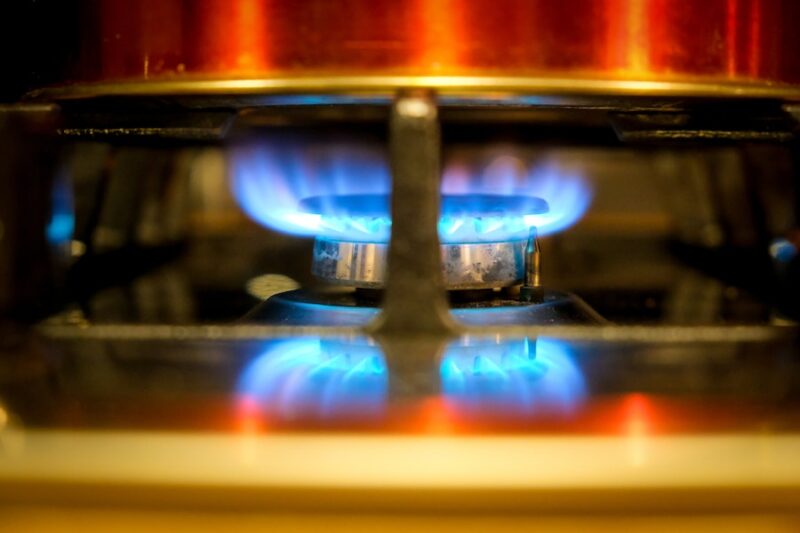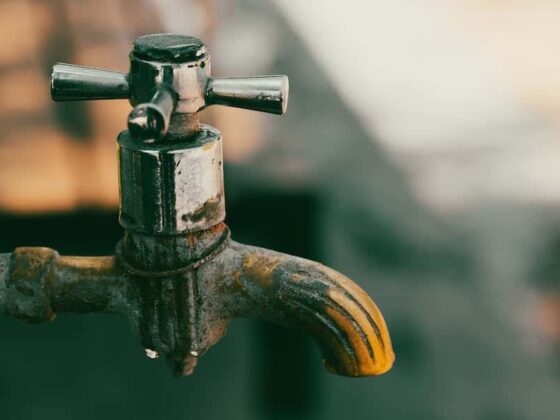Gas stoves are a common appliance found in households worldwide, providing a reliable and efficient way to cook meals. However, with the convenience of gas-powered cooking comes the potential for gas leaks and the associated odor. Many may wonder whether it is customary to smell gas from their stoves or if it indicates a problem. In this article, we will delve into gas odors emanating from stoves and explore whether it is a typical occurrence. By understanding the functioning of gas stoves, the potential causes of gas odor, and the signs of a gas leak, we can gain insight into when a gas odor is typical and warrants immediate attention.
Is It Normal To Smell Gas From Stove?
No, it is not customary to smell gas from a stove. A gas odor indicates a potential gas leak, which can be hazardous. Gas leaks are a serious safety concern and should never be ignored. If you detect a gas odor near your stove, it is crucial to take immediate action. Open windows and doors for ventilation, turn off the gas supply and evacuate the premises if necessary. Contact your gas company or a technician to inspect and repair the stove or gas lines. Regular maintenance and gas safety checks are essential to prevent potential issues and ensure the safety of your household.
How Do Gas Stoves Work?
Gas stoves utilize a steady supply of natural gas or propane as their fuel source. The basic functioning of a gas stove involves several key components and processes:
Gas Supply: Gas stoves are connected to a supply line that delivers natural gas or propane to the appliance. The supply line is typically connected to a gas meter or a propane tank.
Control Knobs: Each burner on a gas stove has its control knob, which allows users to regulate the gas flow and adjust the flame intensity. By turning the control knob, the user opens or closes the gas valve, controlling the amount of gas flowing into the burner.
Gas Burners: Gas stoves have multiple burners, usually arranged in a circular pattern on the stovetop. These burners consist of tiny openings called ports, through which the gas is released. When the gas is ignited, it produces a flame that provides the heat necessary for cooking.
Ignition System: Gas stoves employ a pilot light or an electronic ignition system to ignite the gas and create a flame. In traditional stoves with a pilot light, a small, continuously burning flame is present near the burners, which ignites the gas when the control knob is turned. In modern stoves with electronic ignition, a spark or electric current ignites the gas when the control knob is turned on.
Safety Features: Gas stoves are equipped with safety features to ensure the user’s safety. These may include flame failure devices, which automatically shut off the gas supply if the flame is accidentally extinguished, and thermocouples, which detect if the flame is present and prevent gas flow if it is not.
Ventilation: Proper ventilation is crucial for gas stoves to release combustion byproducts, such as carbon monoxide, and maintain air quality. This is typically achieved through an exhaust hood or a range hood that captures and expels the cooking fumes and gases to the outside.
The Components Of A Gas Stove
Gas stoves consist of several vital components that work together to facilitate the cooking process. These components include:
- Gas stoves typically have multiple burners arranged on the stovetop. Each burner has a base and a series of small openings called ports. The ports release the gas, which mixes with air and is ignited to produce a controlled flame for cooking.
- Located on the front panel of the stove, control knobs allow users to adjust the gas flow and flame intensity for each burner. Turning the knobs opens or closes the gas valves, regulating the gas released to the burners.
- The gas supply line connects the gas source, such as a natural gas pipeline or a propane tank, to the stove. It delivers the fuel to the burners and is typically equipped with a shut-off valve for safety purposes.
- Traditional gas stoves often feature a pilot light, a small, continuously burning flame near the burners. When the control knob is turned, the gas flows to the burner and is ignited by the pilot light.
- Modern gas stoves are equipped with electronic ignition systems. When the control knob is turned, an electric spark or current is generated, igniting the gas and creating a flame. This type of ignition eliminates the need for a pilot light.
- Some gas stoves include an oven for baking and roasting. The oven has its own set of burners and controls for temperature regulation. It typically features a broiler and may have additional features like convection capabilities.
- Gas stoves often incorporate safety features to prevent accidents and gas leaks. These can include flame failure devices, which automatically shut off the gas supply if the flame goes out, and thermocouples, which detect the presence of a flame and control gas flow accordingly.
How Can Gas Leaks Occur?
Gas leaks can occur in several ways, and it’s essential to understand the potential causes and risks associated with them. Here are the details on how gas leaks can occur:
Faulty Connections
Gas leaks can happen due to improper installation or faulty connections in the gas supply lines. If the gas supply line is not securely connected or if the fittings are worn or damaged, it can result in gas leakage.
Aging or Damaged Gas Lines
Over time, gas lines can deteriorate or become damaged due to corrosion, physical impact, or natural wear and tear. Aging gas lines are more prone to cracks or leaks, especially in older homes or buildings with outdated gas infrastructure.
Poor Maintenance
Lack of proper maintenance can contribute to gas leaks. Ignoring regular inspections, neglecting repairs, or failing to address signs of wear and tear on gas lines, valves, or fittings can lead to gas leaks over time.
Accidental Damage
Accidents or incidents such as digging without knowledge of underground gas lines, hitting gas lines during construction or renovation work, or accidental damage caused by heavy machinery can result in gas leaks.
Natural Disasters
Natural disasters like earthquakes, floods, or storms can damage gas lines, causing leaks. Ground shifting during earthquakes, floodwaters compromising gas lines, or falling debris from severe storms can all contribute to gas leaks in affected areas.
Gas Appliance Malfunctions
Gas leaks can also occur due to malfunctions or defects in gas appliances, including gas stoves. Faulty valves, cracked seals, or damaged connectors within the appliance can lead to gas leakage during operation.
What Are The Risks Associated With Gas Leaks?
Gas leaks pose several risks that can have severe consequences for both property and personal safety. Here are the critical risks associated with gas leaks:
Fire Hazard
One of the most significant risks of gas leaks is the potential for fires. Natural gas and propane are highly flammable, and even a tiny spark or ignition source can ignite the leaked gas, leading to a dangerous fire that can quickly spread and cause extensive property damage.
Explosion
Besides the fire hazard, gas leaks also carry the risk of explosions. If a significant amount of gas accumulates in an enclosed space without proper ventilation, the slightest spark or ignition source can trigger an explosion. These explosions can result in catastrophic damage to buildings, causing injuries or even fatalities.
Carbon Monoxide Poisoning
The incomplete combustion of natural gas or propane produces carbon monoxide (CO), a colorless, odorless, and highly toxic gas. A gas leak can lead to an increased concentration of carbon monoxide in the air, posing a severe risk of carbon monoxide poisoning. Inhaling high levels of carbon monoxide can lead to symptoms like dizziness, nausea, headaches, and confusion, and in extreme cases, it can be fatal.
Health Effects
Exposure to natural gas or propane can cause health issues. Inhaling gas fumes can irritate the respiratory system, leading to coughing, difficulty breathing, or respiratory distress. Prolonged exposure or high concentrations of gas can also cause symptoms such as nausea, fatigue, eye and throat irritation, and even neurological effects.
Environmental Impact
Gas leaks contribute to environmental pollution. Methane, the primary component of natural gas, is a potent greenhouse gas that significantly contributes to climate change. When gas leaks occur, methane is released into the atmosphere, exacerbating the environmental impact and contributing to global warming.
Final Thoughts
Gas leaks from stoves are not considered normal and should never be ignored. A gas odor indicates a potential issue that requires immediate attention. Gas leaks pose significant risks, including fire hazards, explosions, carbon monoxide poisoning, health effects, and environmental impact. It is crucial to prioritize gas safety by following proper installation procedures, conducting regular maintenance, and promptly addressing any suspected leaks. Understanding the components of a gas stove, recognizing abnormal gas odors, and knowing the appropriate actions can help ensure the safety and well-being of individuals using gas stoves. By staying vigilant and taking necessary precautions, we can mitigate the risks associated with gas leaks and create a safer home environment.
FAQ’s
Q: How can I tell if there is a gas leak in my home?
A: Common signs of a gas leak include a distinct odor (similar to rotten eggs), hissing sounds near gas appliances or pipes, dead plants or vegetation near gas lines, and physical symptoms like headaches or nausea. If you suspect a gas leak, it is essential to evacuate and contact your gas provider or emergency services immediately.
Q: What should I do if I smell gas from my stove?
A: If you detect a gas odor from your stove, it is crucial to take immediate action. Open windows and doors for ventilation, avoid using electrical devices or open flames, turn off the gas supply if safe, evacuate the premises, and contact your gas provider or emergency services to report the gas leak.
Q: Can a gas stove emit a faint gas odor when turned on?
A: It is considered normal to briefly smell a faint gas odor when initially turning on a gas stove. This is usually due to a small amount of gas released before the burners ignite. However, if the odor persists or becomes more robust, it may indicate a gas leak that requires attention.










